Architects of the Air: The Remarkable Communal Nests of Sociable Weavers
Sociable Weavers are an amazing bird species that inhabit the dry regions of Southern Africa. These birds are admired for their unique architectural skills that involve construction of large colonies that are formative miracles of the avian world. Such nests are not only large, with over a hundred pairs of weavers in them, but are also woven with great skill to offer optimal environmental conditions with great stability and a strong structure throughout the year.
What makes these constructions so interesting to both biologists and architects? The nests are the embodiment of the highest achievements of evolutionary fabrication, containing examples of macro structures resulting from biological requirements. These weaver nests are much more than just dwellings; they are multi-generational strongholds that are built quite naturally, in order to provide that living space which is best suited for conditions in this environment.
Do you ever think that it will be interesting to visit one of these bird cities? Think of the liveliness, where each bird takes part in constructing and protecting the nest—a perfect example of teamwork.
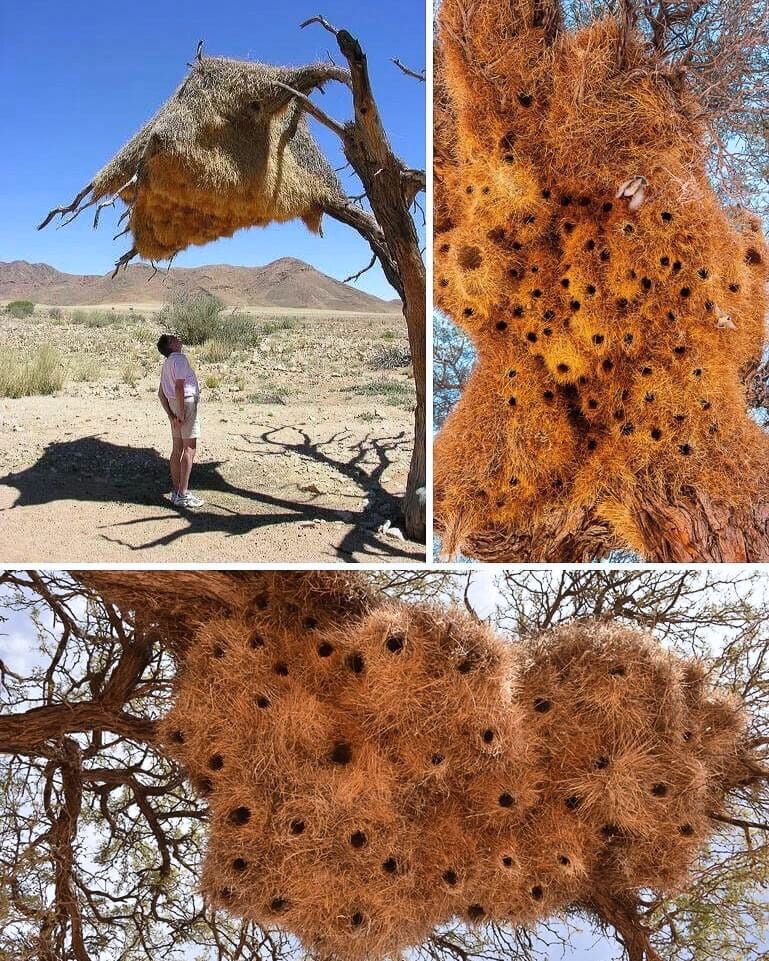
1. The Sociable Weaver – A Brief Overview
1.1. Sociable Weaver Species: Appearance, Behavior, and Habitat
The Sociable Weaver can easily be identified by its sparrow-like plumage and a sandy pale colour that is unique for the bird and suits the South African deserts where the bird is found. These birds are small in size and have a narrow beak and large and contracted tail which resembles a fork-tailed shape. Sociable weavers are very active socially, almost never seen alone; the bird lives in large groups in which cooperation is essential for the birds’ survival. Their natural environment is the dry savannah and the grasslands on which they build their nests in acacia trees or human structures in their natural habitat.

1.2. Importance of the Sociable Weaver in the Ecosystem of Southern Africa
The Sociable Weaver is an important species in the ecosystem of the Southern Africa region. These birds build very complex nests which not only offer a home to them but also to many other animals such as birds of prey, owls and small mammals which may use the outer or abandoned rooms in a large colony nest. Their activity is useful in the distribution of seeds in the ecosystem and thus acts as a contributing factor towards the sustenance of the local ecosystems. Furthermore, the nests add to the balance of the ecosystem as they can be homes to insects and other small animals.
1.3. Endemic Species in Southern Africa
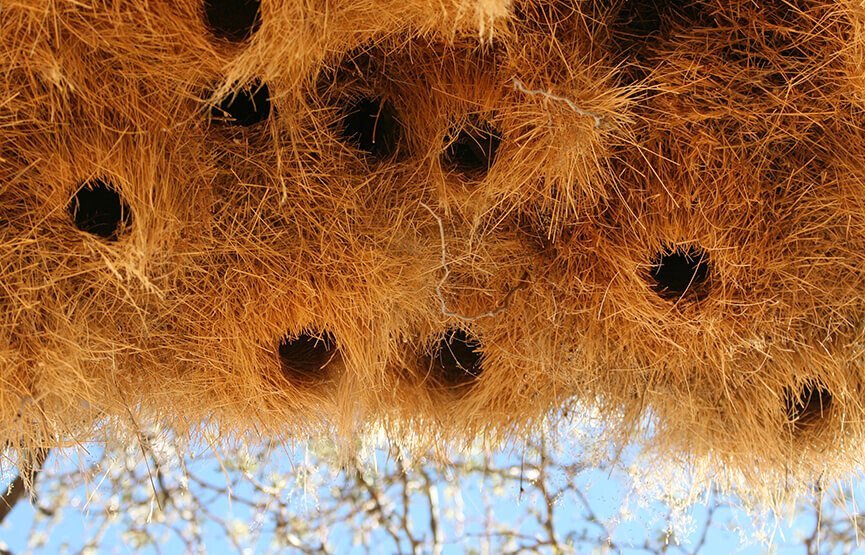
Being an endemic species found in Southern Africa, Sociable Weaver birds are a topic of interest for bird lovers and researchers included. The way they build nests and the importance they possess in their ecosystem make it clear that the balance of this region is fragile. Studying these birds helps in understanding the dynamics of interdependency and the survival strategies of species that inhabit hostile environments.
2. Architectural Marvels – The Nests
2.1. The Nests’ Size, Structure, and Materials Used

These nests of Sociable Weavers are not just big but actually colossal structures. These structures can measure up to 20 ft in width and 10 ft in height to resemble haystacks that are placed on trees or utility poles, for instance. Every nest is hundreds of small compartments, each intended for several pairs or a small number of weavers. The main inputs are grass and straw, these are combined with twigs and fibre to form the main body of the structure and is then covered with softer materials for insulation. The covering is normally strengthened with mud, depending on environmental factors such as extreme weather conditions.
2.2. The construction Process: How and When These Nests Are Built

The construction of the Sociable Weaver nest is a group one and is constructed all year round through teamwork. New nests are usually initiated during the breeding period since the urge to have secure and comfortable chambers is at its peak. However, maintenance and expansion are continuous processes to be carried out. The old nests are always remodeled and extended as the colony increases in size. The birds utilize their bills to gather the resources needed and transport them from the surrounding environment to build and fix this beautiful home.
2.3. The Engineering Behind the Nest Design
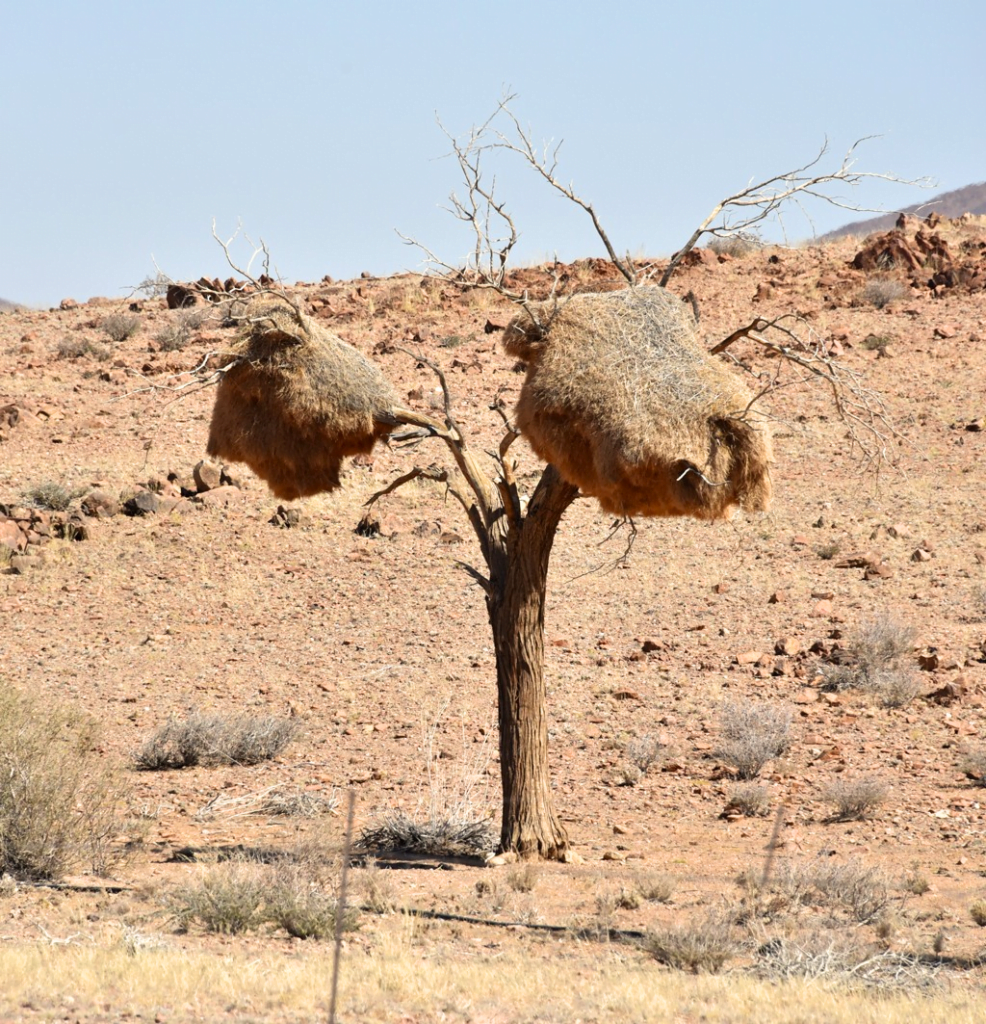
The construction of these nests can be described as a masterpiece of natural architecture. Architecturally, the nests are designed to be durable with a view of withstanding the harsh conditions of the desert. Their walls are also thick and insulated to keep the interior cool during the day and warm during the night to offer a good climatic condition all through. This thermal regulation is particularly important in the survival of an organism in extreme conditions of heat or cold. Furthermore, the common use of the nest also aids in cutting the cost of raw materials and energy required for the construction by individual birds, a perfect demonstration of living in harmony with the environment.
3. Inside the Nest: A Closer Look at Communal Living
3.1. The Internal Structure: Chambers and Tunnels

Within the large nests of Sociable Weavers, there is the interior composed of chambers and tunnels for the colony habitat. Every coop as is mainly made of fine grasses, is an independent room for two birds or a family. These are chambers in the nest and the tunnels leading to them are small and spiral in order to create a pathway for access without compromising the integrity of the structure. This internal labyrinth not only contributes positively to the stability of the nest but also in the proper arrangement of the living spaces of the colony.
3.2. How the Nests Facilitate Privacy and Community Living

Although their nests are located in communities, the Sociable Weavers are able to live in harmony with personal space. The fact that the structure is divided into several chambers means that every bird or a family unit gets to have its own nesting area crucial for incubation of young ones. On the other hand, the partitions and the interlinked passages require the weavers of the nest to have the ability to feed, maintain and cooperate in general more easily.
3.3. The Benefits of Communal Nests: Temperature Regulation and Protection from Predators

The nests of Sociable Wevers are communal and this has some benefits. First of all, the walls are very thick and are covered with layers of grass and other natural materials so that temperature regulating is easy. This insulation makes the interior cool during the day and warm during the night, which is very important during the hot desert climate. Secondly, the size and construction of the nest provide the young with protection that is almost impossible for a predator to penetrate. The small birds of prey have difficulties in flying in the dense structure and many weavers are helpful in combined defending against large enemies. This communal aspect not only improves the life expectancy of each bird but also the stability of the colony as a unit.
4. Social Structure and Community Dynamics
4.1. Exploration of the Social Hierarchy Within the Nest
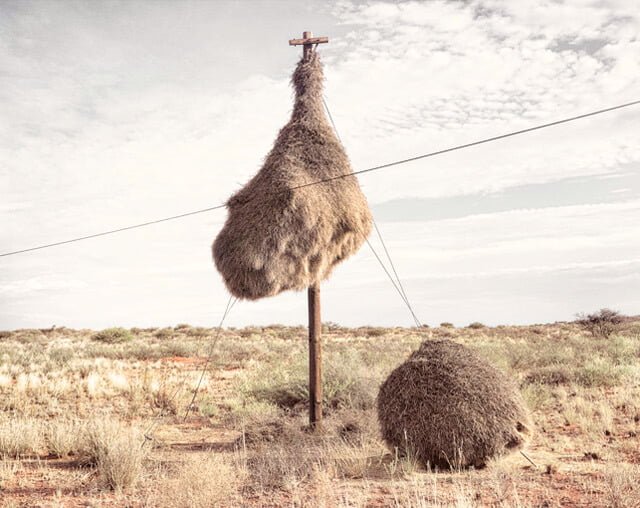
In the Sociable Weaver’s nest, a busy community of birds, there are important roles that each bird occupies to ensure that there is order and coordination. Not all birds of the colony work for themselves but some of them might lead the colony, especially when it comes to the construction of the nest and the defense. Such a hierarchy makes it possible to allocate resources properly and guarantee that the nest remains a secure place for everyone, from the youngest chicks to the oldest members.
4.2. Roles and Responsibilities
The success of Sociable Weavers’ communal living relies heavily on the division of labour among colony members. Some birds specialize in gathering materials and repairing the nest to keep it sturdy and livable, while others focus on foraging for food, which is shared among the colony. Additionally, certain members stand guard to alert the colony of potential predators. This collaborative approach ensures that all essential tasks are handled efficiently, allowing the colony to thrive in challenging environments.
4.3. Benefits of Communal Living
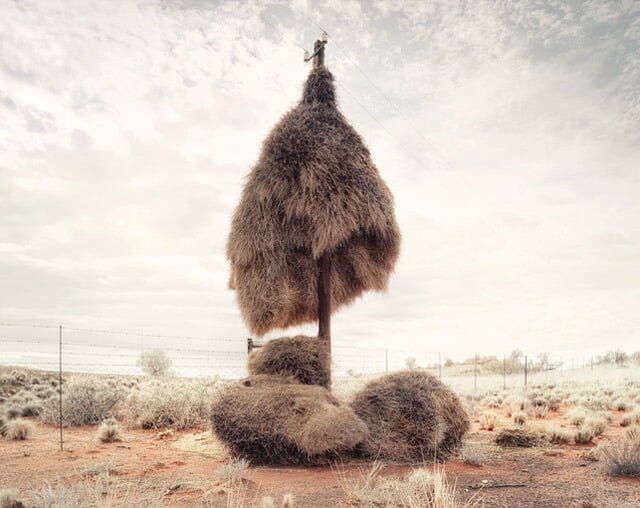
Communal living offers significant benefits to Sociable Weavers. The principle of ‘safety in numbers’ is a key advantage, as a large, vigilant group can more effectively detect and deter predators, reducing the risk to any single bird. Additionally, sharing resources, such as food and nesting materials, reduces the burden on individual birds, ensuring that even in times of scarcity, the colony can survive. This shared approach not only boosts the survival rates of individual weavers but also enhances the reproductive success of the colony, securing the future of their generations.
5. The Legacy of the Nests
5.1. Lifespan and Historical Significance of These Nests
The nests built by Sociable Weavers are not only creative architectural constructions, but also historical structures that can outlast the birds themselves. Interestingly, some of these nests have been in use for well over a century and have been periodically rebuilt by new generations of weaver ants. The history of such nests is not only in their years; they are a symbol of the continuity of the fight for existence and mastery of ecology as a historical process, which shows the prospects for the periods of natural building.
5.2. Stories or Studies Highlighting Nests That Have Been in Use for Over a Century
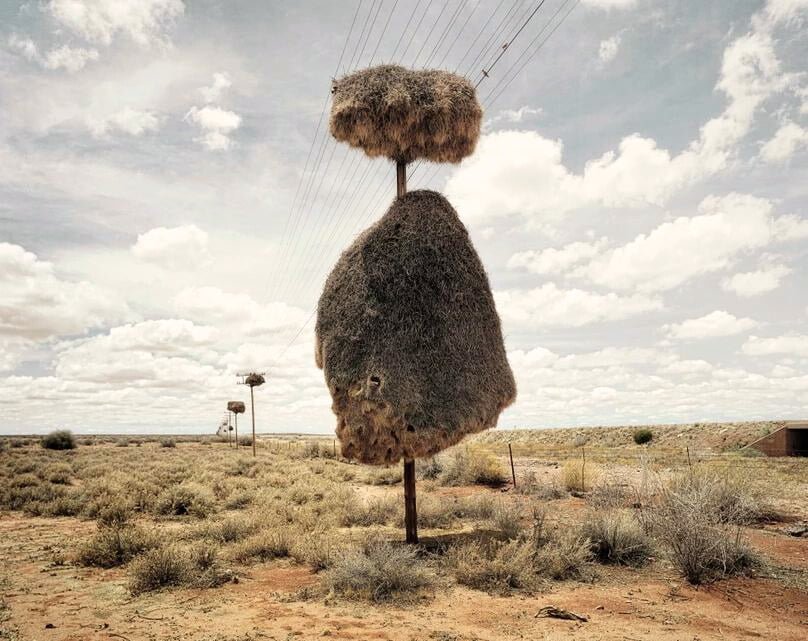
Historical accounts and scientific studies have documented several instances where Sociable Weaver nests have been inhabited for generations, withstanding the harsh conditions of their environment year after year. One notable study tracks a nest that has been active for over 100 years, detailing the changes in its structure and the succession of its avian inhabitants. These stories not only fascinate but also help scientists understand the dynamics of communal living and its impact on species survival.
5.3. Impact on Future Generations of Sociable Weavers

These nests therefore deeply affect successive generations of Sociable Weavers in a way. Such structures also offer young weavers safe and secure nesting grounds, enhancing their probabilities of survival and reproduction significantly. In addition, the traditions about nest construction and survival that are acquired for several generations contribute to the cultural capital of the colony. This creates a culture where future generations are able to build on existing practices and refine their architectural designs based on their requirements and conditions.
Conclusion
The communal nests of Sociable Weavers stand as a testament to the marvels of nature’s ingenuity. These impressive structures are not only for their architectural complexity and durability but also for their vital role in supporting the species and enhancing their surrounding ecosystem. The nests exemplify the remarkable balance of individual needs and community welfare, embodying the true spirit of communal living.
These architectural marvels provide insightful lessons regarding collaboration and the significance of creating long-term structures. Sociable Weavers show that it is possible to be more productive and sustain the society better by accepting to live in harmony, share resources and work together in order to overcome harsh conditions in the environment.
As we reflect on the intricate nests of these extraordinary birds, one must wonder: what other lessons could we learn from nature’s master builders? In what ways could their long-standing practices challenge contemporary notions of dwelling and collaborating within our societies? Thus, the story of Sociable Weavers should inspire us to pay more attention to the world around us since it will always hold something new for those willing and able to perceive it.
Also you can read an article about Trump is Fine After Assassination Attempt at Rally in Butler, PA and more amazing articles in our website Bamboospanda.









